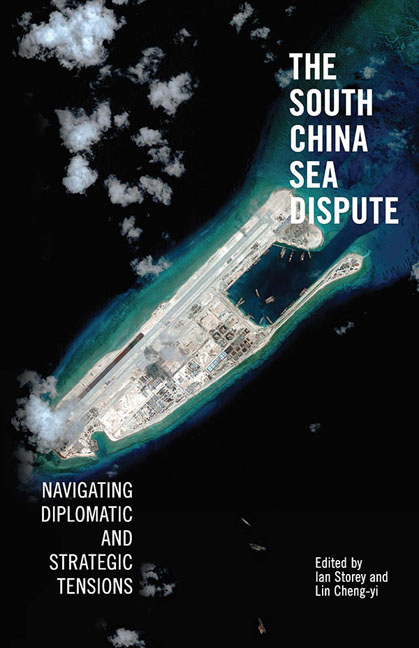Book contents
- Frontmatter
- Contents
- About the Contributors
- 1 Introduction
- 2 Untangling a Complex Web: Understanding Competing Maritime Claims in the South China Sea
- 3 China Debates the South China Sea Dispute
- 4 Taiwan's Evolving Policy towards the South China Sea Dispute, 1992–2016
- 5 The South China Sea: Primary Contradictions in China–Southeast Asia Relations
- 6 Rising Tensions in the South China Sea: Southeast Asian Responses
- 7 The Philippines and the South China Sea Dispute: Security Interests and Perspectives
- 8 A Vietnamese Perspective on the South China Sea Dispute
- 9 The South China Sea Dispute: Options for Malaysia
- 10 The United States and the South China Sea: Front Line of 228 Hegemonic Tension?
- 11 The South China Sea Dispute in U.S.–ASEAN Relations
- 12 Japan and the South China Sea Dispute: A Stakeholder's Perspective
- 13 Conclusion
- Index
12 - Japan and the South China Sea Dispute: A Stakeholder's Perspective
Published online by Cambridge University Press: 19 May 2017
- Frontmatter
- Contents
- About the Contributors
- 1 Introduction
- 2 Untangling a Complex Web: Understanding Competing Maritime Claims in the South China Sea
- 3 China Debates the South China Sea Dispute
- 4 Taiwan's Evolving Policy towards the South China Sea Dispute, 1992–2016
- 5 The South China Sea: Primary Contradictions in China–Southeast Asia Relations
- 6 Rising Tensions in the South China Sea: Southeast Asian Responses
- 7 The Philippines and the South China Sea Dispute: Security Interests and Perspectives
- 8 A Vietnamese Perspective on the South China Sea Dispute
- 9 The South China Sea Dispute: Options for Malaysia
- 10 The United States and the South China Sea: Front Line of 228 Hegemonic Tension?
- 11 The South China Sea Dispute in U.S.–ASEAN Relations
- 12 Japan and the South China Sea Dispute: A Stakeholder's Perspective
- 13 Conclusion
- Index
Summary
While not a party to the territorial and maritime boundary disputes in the South China Sea, Japan is an important stakeholder by virtue of its significant economic and strategic interests in Southeast Asia and especially in the region's maritime domain. As tensions have risen in the South China Sea since 2007–8, Japan has become increasingly concerned about how the dispute might undermine its national interests. Moreover, Tokyo has a bilateral dispute with Beijing centred on the Senkaku/Diaoyu Islands in the East China Sea, and it sees worrying parallels with recent developments in the South China Sea. In the minds of Japanese policymakers, the disputes in the South and East China Seas are inextricably linked. As a consequence, Japan the stakeholder is also emerging as an important diplomatic player in the South China Sea dispute.
Japan's primary economic interest in the South China Sea is to secure the free flow of maritime trade. The disputes among China, Taiwan, and the four Southeast Asian countries (Vietnam, the Philippines, Malaysia and Brunei) have thus far been confined to the political domain, and even occasional skirmishes involving their respective navies and coast guard vessels have not negatively affected Japan's economic interests in the South China Sea. However, Japan clearly has a critical interest in preventing tensions from escalating into armed conflict. Moreover, Japan keeps a close watch on possible bilateral and multilateral agreements pertaining to the territorial and maritime boundary disputes in the South China Sea. The main objective of Tokyo's diplomatic involvement is to prevent settlements among the claimants that contravene or alter the existing international legal framework and thereby restrict Japan's current rights in the maritime domain.
In terms of international law, Japan's dispute with China in the East China Sea is qualitatively different from the South China Sea disputes. Japan has exercised administrative control over the Senkaku/Diaoyu Islands since 1895, except between 1945 and 1971 when the United States administered them as part of occupied Okinawa. The dispute over the Senkaku/Diaoyu Islands is not multilateral in the same sense that the South China Sea dispute is. China's claim to the islands is built upon its claim to Taiwan, and Taiwan's rhetorical acceptance of the “One China” principle binds the two claims together.
- Type
- Chapter
- Information
- The South China Sea DisputeNavigating Diplomatic and Strategic Tensions, pp. 272 - 290Publisher: ISEAS–Yusof Ishak InstitutePrint publication year: 2016



